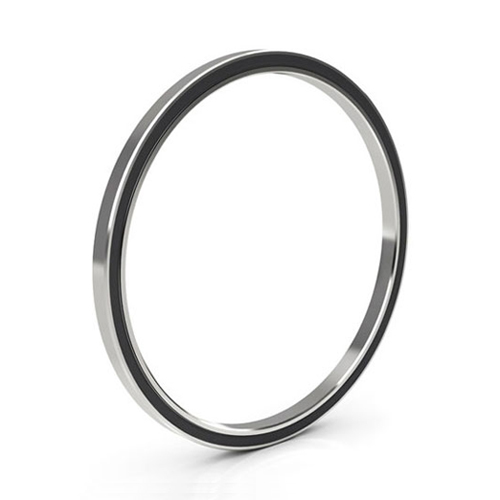
A thin-walled bearing of equal section means that the bearing is equal in size in both the radial and axial sections and is relatively thin in size, while the two dimensions of the normal bearing are not equal, so they are classified as a class. Thin-walled bearings with cross-sections are mainly used in applications where the size limit requires a very small cross-section of the bearing.
Isometric thin-walled bearings: Thin-walled ferrule bearings are highly accurate, very quiet and have a high load carrying capacity. These ball bearings are available in three designs and are extremely small and mostly square in cross section. In these series, even with larger shaft diameters and bearing bores, the cross section remains the same. These bearings are therefore referred to as equal sections.
The equal-section thin-wall ball bearing retainer is a precision non-standard thin-walled ball bearing retainer consisting of seven open series and five sealed series, with inner diameters ranging from 1 inch to 40 inches, and cross-section sizes ranging from 0.1875X to 0.1875 inches. To 1.000X 1.000 inches.
Three types: deep groove ball type (C), angular contact type (E), four point contact type (X). Materials are copper, stainless steel, alloy steel, etc.
The products are mainly used in: robot joint bearings, aerospace high-precision thin-wall bearings and large-scale bearings for wind turbines, etc., which require high-precision and small space.
Product Features
In order to obtain low friction torque, high rigidity and good rotation accuracy of the bearing, a steel ball with a small outer diameter is used. The use of a hollow shaft ensures space for wiring and wiring. The thin-walled bearing realizes a very thin bearing cross section, and also realizes miniaturization and weight reduction of the product. The diversity of products extends the range of uses.
The thin-walled 6700 and 6800 series are available in various dust cover types, flanged versions, stainless steel forms, and wide format.
classification
The thin-walled bearing realizes a very thin bearing cross section, and also realizes miniaturization and weight reduction of the product. The diversity of products extends the range of uses. It is generally divided into plastic seal - RS, iron seal - ZZ, plane, iron card - K, copper card - M.
Thin-walled crossed roller bearing
CRA series thin-walled cross-roller bearings (outer ring split type) are small and lightweight cross-roller bearings that make the outer and inner ring wall thickness very thin. They are small enough to withstand heavy loads, so the equipment The mounting parts of the bearings can be lightweight.
CRB series thin-walled cross-roller bearings (outer ring split type) have the inner and outer ring dimensions to be miniaturized to the utmost extent. The structure is that the outer ring is two divided parts, and the inner ring is an integral structure, which is most suitable for the inner ring. High precision rotation.
CRE series thin-walled crossed roller bearings (inner ring split type) have the structure that the inner ring is divided into two parts, and the outer ring is an integral structure, which is most suitable for places where the outer ring rotation precision is required.
Thin-walled ferrule bearings are highly accurate, very quiet and have a high load carrying capacity. These ball bearings are available in three designs and are extremely small and mostly square in cross section. In these series, even with larger shaft diameters and bearing bores, the cross section remains the same. These bearings are therefore referred to as equal sections. It is this feature that will be in the standard ISO series.
Thin-walled ferrule bearings are distinguished from conventional bearings. Therefore, a larger cross section can be selected and a more load bearing bearing can be used without having to change the shaft diameter. Thin-walled ferrule bearings can be designed to be extremely light and require very little space.
Deep groove ball bearings, four-point contact bearings, angular contact ball bearings, thin wall ferrule bearings can be deep groove ball bearings (C), four-point contact bearings (X), angular contact ball bearings (E). The above various designs are available in different series. The series depends on the size of the cross section. The ball matches the series.
Deep groove ball bearings can support both axial and radial loads. Four-point contact bearings can support bidirectional axial loads as well as radial loads; therefore they operate in the same way as double row angular contact ball bearings. Angular contact ball bearings can match an optimal number of balls and have a contact angle of 30°. They support higher radial loads than deep groove ball bearings or four-point contact bearings and can support axial loads originating in the same direction. For special needs,
Angular contact ball bearings are also available as mating bearings. Therefore, the rigidity and load carrying capacity of these combinations are much higher than for single bearing products.

